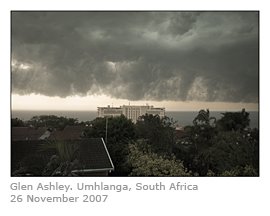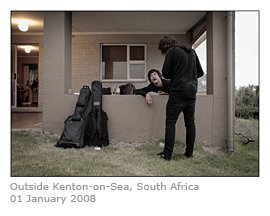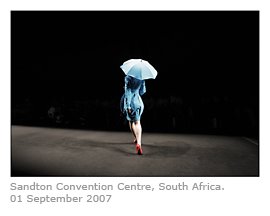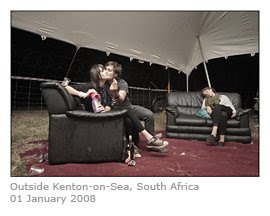
The first sentence of every novel should be: Trust me, this will take time but there is order here, very faint, very human. Meander if you want to get to town. - Michael Ondaatje
In the run-up to the opening of this exhibition on the 9th October, I hope that this blog will serve as explanation of sorts for a methodology; a way of making connections between the work on show and what I have come to regard as inspiration for it... however tenuous the link may seem at times.
I have spoken at some length about it in the past, but only once in public... at the Joburg Arts Fair in March of this year. It was there that I drew on references to writers such as Michael Ondaatje, Jack Kerouac and John Berger as a means of contextualising new work that I had on show at the Fair, and explaining an approach that I felt was finally beginning to emerge and make sense to me...though judging by the faces of some of the passers-by listening to me, I was the only one it was making sense to.
After Open to Misinterpretation (my exhibition focusing on Fokofpolisiekar) opened last year, I hoped to find a different approach, based on some of the realisations that came through the constant interviews and artist walk-throughs; one conducted with Hunter Kennedy of the group, in which he made some key observations. Ideas about narrative and journalistic approach were changing for me, and I had become intrigued by various aspects of my own story that came through in the work, and not just the story of the rock group the exhibition focused on.
In August of that year, I made attempts to force this different approach, to no avail. In September I lucked onto an image, purely by chance, that said something of what I hoped to achieve. By October I was off, with nothing but a date of departure and a date of return as guideline; the work started to appear (piecemeal at first) though it was some time before it would make any kind of sense to me in a larger context.
As sense began to emerge, I saw that I was starting to reference writers and ideas that I had come across in poetry or art/photographic theory, in discussions with friends and colleagues and in particular (though I later realised subconsciously) the works of certain artists, specifically painters, that I - with my limited education in art history - was now being introduced to by the likes of Zander Blom and Michael MacGarry.
As this blog progresses, some of those references may become clearer... even to me, as I write of them. I have tried as much as possible in the past to avoid writing too much on photography, as I constantly seem (and wish) to be learning and am therefore loath to commit myself on "paper" to one idea or theory. That said, I will try... but I welcome questions from anyone slogging through this, to use this blog as a forum of sorts, so that I might explain specific points to readers (and again, myself) as we go.
Consider this then also a diary of sorts, a notebook, the "behind-the-scenes" featurette in the Bonus section of the DVD.
For now, I will simply refer to what Michael Ondaatje had to say to Salon's Gary Kamiya when asked about his approach to narrative and plot preparation in the writing of The English Patient:
I don't really begin a novel, or any kind of book, with any sure sense of what's happening or even what's going to happen... there was a nurse and there was a patient, there was a man who was stealing back a photograph of himself. It was those three images. I did not know who they were, or how they were connected. So I sat down, I started to write and try to discover what the story was... I tend not to know what the plot is or the story is or even the theme. Those things come later, for me.







1 comment:
i am very excited to see and hear more. very interested in what you are doing.
Post a Comment